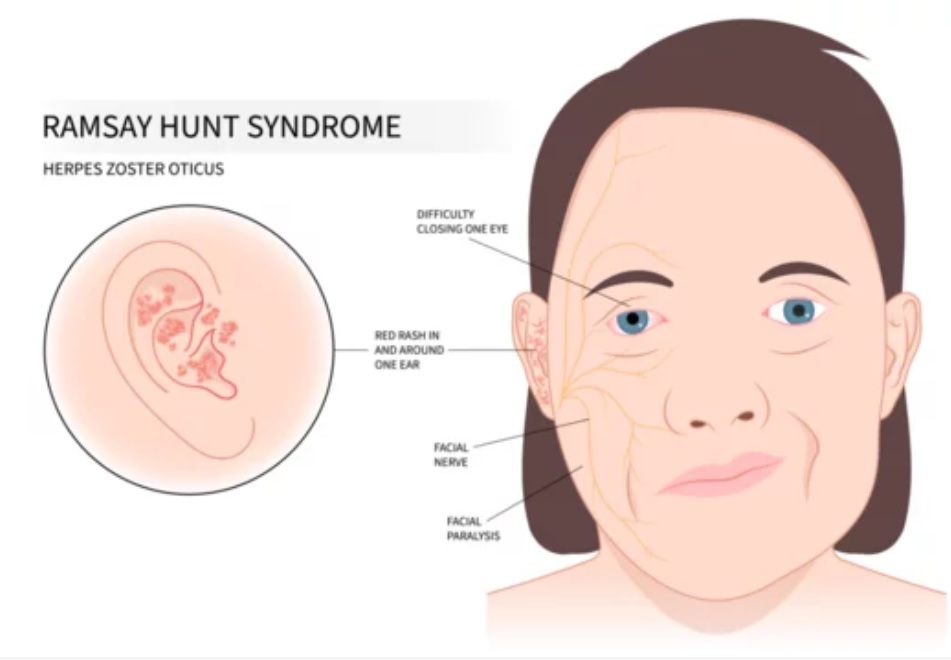INTRODUCTION
The disease is a viral infection caused by the Varicella-Zoster Virus (VZV) that remains latent in the geniculate ganglia for decades after an attack of acute chickenpox.
VZV starts replicating first in the geniculate ganglia and then travels down and affects the facial nerve, inner ear, spiral, and vestibular ganglia. Ganglia of trigeminal and VIII CN have also been implicated.
In herpes zoster oticus, lesions are seen in the distribution of FACIAL NERVE i.e. concha, posterior part of the tympanic membrane, and postauricular region.
Clinical Features
1. Prodrome of Severe Pain in the ear
2. Stimuli for viral reactivation: Immunosuppression, physical and psychological stressors.
3. Painful vesicles with erythematous base
These appear in the canal and concha, behind the pinna and or soft palate.
Later vesicles rupture and form crusts.
4. Unilateral facial palsy
Facial paresis usually recovers over weeks.
5. Deep ear pain
It manifests 1–2 days later.
6. Vertigo, Nystagmus, and Tinnitus
About 25% of patients have one of these
7. Sensorineural hearing loss
It occurs only in 6% of cases.
8. Caloric responses
It is either decreased or absent.
Diagnosis
It is mostly done on the basis of history and clinical examination
Other investigations—-
- Gadolinium-enhanced MRI of the temporal bone: Enhancement of geniculate ganglion of facial nerve.
- HPE: Multinucleated giant cells in vesicle scrapings.
- VZV (varicella-zoster virus) from vesicle fluid.
- VZV DNA by polymerase chain reaction (PCR) assay in vesicle fluid or cerebrospinal fluid (CSF).
Treatment
General
1. Reassurance
2. Relief of ear pain by analgesics
3. Care of the eye.
Eye must be protected against exposure keratitis.
4. Physiotherapy or massage of the facial muscles gives psychological support to the patient.
It has not been shown to influence recovery.
Active facial movements are encouraged when some movements are returned to the facial muscles.
Medical
1. ANTIVIRALS
Tab. Acyclovir 800 mg 5 times a day, or
Tab. Famcyclovir 500 mg three times a day, or
Tab. Valacyclovir 1 gm three times a day for 7 days.
2. ORAL STEROIDS
Prednisolone is the drug of choice.
Tab. Prednisone tapering dose of 6 days course beginning usually with 1 mg/kg.
Contraindications to the use of steroids include —
Pregnancy,
Diabetes,
Hypertension,
Peptic ulcer,
Pulmonary tuberculosis, and
Glaucoma.
